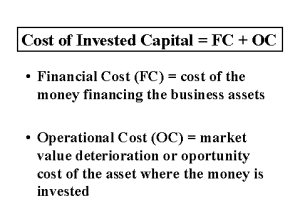Strategic finance management refers to the procedures, systems, and practices established by an institution to aid in reaching its goals, such as expansion, stakeholder’s wealth maximization, and corporate social responsibility. The executives develop insights from business activities, its capabilities, stakeholder expectations, as well as the available opportunities. Hence, the strategies have to be based on a well-formulated game-plan, which has a clear vision (Deloitte, 2019).
An appropriate strategic finance management scenario defines an elaborate picture of the organization’s target, lays down the courses of action to lead the entity there, brings work satisfaction and morale, as well as brings together finance officials through fast communication, and timely decision making (Deloitte, 2019).
Ratio Computation and Analysis for Redding and Neaves Companies – Using Strategic Finance Management Techniques
1. Profitability Ratios
This refers to financial computations that investors and business advisers apply while determining an institution’s revenue (Clear Tax, 2018). To get the profit realized, the metrics asses the difference between the receipt and payments made within a particular financial period, such as a year. For the two competing manufacturers, returns on investment and returns on capital employed are used.
a. Return on Investment
It is a ratio used to compute the gains of an investor concerning the amount of their investment. A high ratio, the more the benefits to be earned by the investor (Schmidt, 2019). With this ratio, investors can eliminate the projects promising low profits and focus on those that have a likelihood of raising higher returns.
Return on Investment Redding Co. = Revenue after Tax × 100
Capital Employed
ROI = 49 × 100 = 40.49%
121
ROI Neaves Co.
= 379 × 100 = 65.34%
580
Conclusion: Neaves has a higher ROI, hence is earning more revenue compared to Redding by 24.84%. Thus, Neaves is more appealing to an investor.
b. Return on Capital Employed
It is a ratio that is used in determining a company’s profitability due to its efficiency in capital utilization. A company with a higher ROCE means that it had a more economical use of capital that realized maximum gains (Daniel, 2018).
ROCE = Earnings before Interest and Tax × 100
Capital Employed
Redding: = 80 × 100 = 66.11%.
121
Neaves ROCE = 503 × 100 = 104.79%
480
Conclusion: both organizations have a significant amount of returns on the capital they have put to use. However, with Neaves having a higher return, investors can prefer it as their investment of choice because it will utilize their funds better.
2. Efficiency Ratios Strategic Finance Management
They are financial metrics that inform on a company’s ability to utilize its assets while keeping an eye on its liabilities in both the short and long terms (Peavler, 2019). It is the efficiency ratios that ensure an organization is not experiencing over investment or under investments. Fixed assets turnover and inventory turnover are the ratios to be used in this analysis.
a. Fixed Assets Turnover
It looks into how a form utilizes the available fixed assets like plants and equipment to increase sales. A firm that has a low number of fixed assets turnover in under utilizing its assets and should work towards optimizing the usage of fixed assets (Peavler, 2019).
Fixed Assets Turnover = (Sales ÷ Fixed Assets)
Redding Co.
FAT = (195 ÷ 255) = 0.764
Neaves Co.
FAT = (1050 ÷ 1026) = 1.033
Conclusion: Neaves Company has a higher fixed assets turnover, meaning that it utilizes its fixed assets in making sales, better compared to Redding Company.
b. Inventory Turnover
Also known as stock turnover, inventor turnover is a financial metric that is used in determining the number of times that a business has ordered a new batch of inventory after selling a previous batch (Nicasio, 2019). It is computed on pre-determined periods such as semiannually, annually, monthly, or weekly.
Inventory Turnover = Cost of Sales.
Average Stock
Redding Co. = 78 = 5.2 Times
15
Neaves Co. = 273 = 8.03 Times
34
Conclusion: Neaves Co. has a higher inventory turnover ratio than Redding Co. it implies that Neaves has more sales; hence, more promising returns or revenue.

3. Liquidity Ratios
They are ratios used in measuring the ability of an organization to settle its short-term liabilities when they are due without necessarily having to raise capital from lenders (Kenton, and Hayes, 2019). The quick ratio and Current ratio are used in this analysis and commonly found in strategic finance management.
a. Quick Ratio
It is a financial ratio used in determining the ability of an entity to meet its current liabilities using its liquid assets only. In this case, the stock is eliminated from the liquid assets category because it is time-consuming to convert it into cash (Eliodor 2014, P. 5). A company that is at optimal performance should have a quick ratio of 1:1, which shows its ability to pay for the liabilities due using its liquid assets.
Quick ratio = Current Assets – Stock
Current Liabilities
Redding Co. = 65 – 15 = 1.67
30
Neaves Co. = 198 – 34 = 1.07
153
Conclusion: Since the optimal quick ratio should be 1:1, and both have a quick ratio of more than 1, they can readily service their obligations when due. However, Redding Co has a higher quick ratio and is, therefore, better positioned to convert its liquid assets faster compared to Neaves Co.
c. Current Ratio
It is a liquidity ratio, which is used in measuring an entity’s ability to pay for its short-term liabilities that is the debts due within a year. It informs the investors about how well a company realizes optimal benefits from its current assets so that it can meet its current debts and other payables (Kenton, 2019). The optimal current ratio should be 2:1 that is two current assets for one current liability
Current Ratio = Current Assets
Current Liabilities
Redding Co.
Current Ratio = 65 = 2.167
30
Neaves Co.
Current Ratio= 198 = 1.294
153
Comparison: Redding Company has a higher current ratio of 2.17:1, while Neave’s Company’s current ratio is 1.29:1. It implies that Redding can quickly pay for its current liabilities while Neaves is going to experience challenges paying for the obligations because it has not met the optimal current ratio.
4. Gearing Ratios.
It is a business assessment ratio that is concerned with the business’s capital structure. The ratio determines the amount and impacts of financing contributed by the stakeholders compared to external funding, such as the use of debt (Bragg, 2019). If a company has a high gearing ratio, it implies that the company has used more of debt capital and less of equity capital. Besides, low gearing means that the company has employed more equity and less of debt in its capital. A highly leveraged/geared company uses debt capital to meet daily obligations, which poses a threat of bankruptcy to the organization (Bragg, 2019). In this comparison, the equity ratio and debt ratio will be used to assess the gearing of the two companies.
a. Equity Ratio/ Net worth to total assets ratio
It is a financial arithmetic that indicates the relative amount of equity that is used in paying for a company’s assets. It informs shareholders about their funds compared to the institution’s total assets, thereby showing the businesses’ solvency position in the future (Ready ratios, 2013).
Equity ratio = Equity ÷ Total Assets
Redding Co.
Equity ratio = 121 ÷ 320 = 0.378 or 37.8 %.
Neaves Co.
Equity ratio = 480 ÷ 1214 = 0.395 or 39.5 %
Comparison: both companies have an equity ratio of less than 51%. It means that their equity has funded a low amount of their assets, while a significant amount is funded using borrowed funds. The two companies are leveraged and are going to pay a significant amount of interest on the borrowed funds.
b. Debt Ratio
It is a financial leverage arithmetic that is used to measure the amount of a company’s assets that have been purchased using debt capital. If a company has a debt ratio of more than 1, it implies that it has a higher number of liabilities compared to its assets. Conversely, a ratio that is less than 1 indicates that the company has a high proportion of its assets purchased using equity (Investors answers, 2019).
Debt Ratio = Debt
Total Assets
Redding Co.
Debt ratio = 199 = 0.62 or 62%
320
Neaves Co.
Debt ratio = 634 = 0.52 or 52%
1214
Comparison: Redding Co. has a higher debt ratio, meaning that a significant proportion of its assets are acquired using debt capital other than equity. Therefore, Redding Company is more leveraged compared to Neaves Company.
5. Ratios by Investors to Determine Performance
They are financial arithmetic ratios that are used in determining the amount of returns an investor expects if they obtain a company’s stock at the current market prices. The ratio help in determining whether the shares are under priced or overpriced (Peavler, 2019). The ratios to be used are the interest coverage ratio and preference dividend coverage ratio.
a. Interest Coverage Ratio
It is used in determining the ease of a business in servicing the interest of its borrowed funds from the realized revenue (Ready Ratios, 2013). The higher the ratio, the better the financial stability of an institution. If a company has a ratio of less than 1.0, it is facing challenges in making ales to raise revenue.
Interest Coverage Ratio = Earnings Before Interest and Tax
Interest Expense
Redding Co.
ICR = 80 ÷ 19 = 4.21
Neaves Co.
ICR = 503 ÷ 29 = 17.34
Comparison: Both companies have an ICR of more than 1. Therefore, they can pay their interest expenses quickly from the revenue realized. Neaves Company is better positioned to pay for interest expenses because it has a higher ICR compared to Redding Co.
b. Preference Dividends Coverage Ratio
It is a financial ratio used in determining the organization’s ability to for its preference dividends. A company that has issued preference dividends determines its ability to pay the dividends on such shares using this ratio.
Preference dividends coverage ratio = Profits After Tax.
Preference Dividends
Redding Co.
= 49 ÷ 0 = 0
Neaves Co.
379 ÷ 100 = 3.79
Comparison: Redding Company has not issued any preference shares; hence, it doesn’t pay any preference dividends. Neaves Co. has issued preference shares and has a preference dividends coverage ratio of 3.79. The latter company can, therefore, pay for the preference easily when they are due.
References – Strategic Finance Management Essential Reading
Bragg, S. (2019) Gearing ratio, Accounting Tools
Clear tax, (2018) Profitability Ratio Formula with Examples
Daniel, E. (2018) Return on Capital Employed
Deloitte (2019) Finance Strategy solutions
Eliodor, T. (2014) Financial Statement Analysis, Journal of Knowledge Management, Economics, and IT.
Investing Answers (2019). Debt Ratio
Kenton, W. (2019) Current ratio Analysis – Strategic Finance Management
Kenton, W. (2019) Strategic Financial Management
Nicasio, F. (2019) Inventory Turnover Definition and How to get it Right
Peavler, R. (2019). Asset Management ratios in Financial Analysis
Ready Radios, (2013) The definition and application of equity ratio – Strategic Finance Management
Schmidt, M. (2019) Returns on Investment Metric for measuring profitability
Strategic Finance Management Relevant Posts
Finance Dissertation Topics
Financial Ratios Financing Constraints
Did you find any useful knowledge relating to Strategic Finance Management in this post? What are the key facts that grabbed your attention? Let us know in the comments. Thank you.

